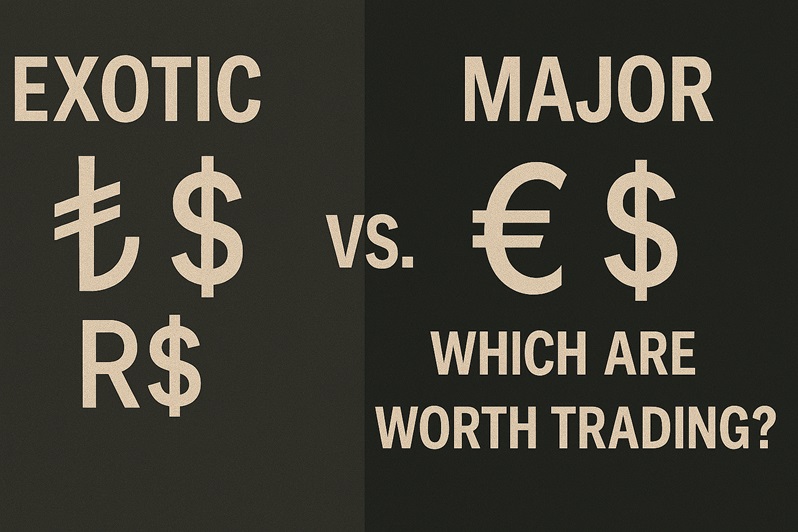
In the world of Forex trading, not all currency pairs are created equal. While many traders focus on the well-known major pairs like EUR/USD or USD/JPY, others are drawn to the potential of exotic pairs such as USD/TRY or EUR/ZAR. Each type offers distinct characteristics that can influence volatility, spread, liquidity, and risk. Choosing between exotic and major currency pairs isn’t just about potential profit—it’s about aligning your strategy with your risk appetite and trading goals.
Understanding Major Currency Pairs
Major currency pairs involve the most traded currencies globally, including the US dollar (USD), euro (EUR), Japanese yen (JPY), British pound (GBP), Swiss franc (CHF), Australian dollar (AUD), and Canadian dollar (CAD). These pairs are known for their high liquidity, tight spreads, and reliable price movements.
Because major pairs are influenced by widely tracked economic data and central bank policies, they tend to respond more predictably to news and technical analysis. This makes them ideal for beginners and institutional traders alike, offering smoother execution and reduced risk of slippage. Major pairs also benefit from high-frequency trading, which helps maintain efficient pricing around the clock.
Exploring the Dynamics of Exotic Pairs
Exotic currency pairs consist of a major currency paired with the currency of a developing or emerging market. Examples include USD/THB, EUR/PLN, and GBP/MXN. These pairs often come with higher spreads, lower liquidity, and increased volatility. While that may sound like a downside, it also presents unique trading opportunities for those who can manage the risks.
Exotics are heavily influenced by local political events, commodity prices, and regional economic shifts. This makes their price action less predictable and more reactive. For experienced traders who conduct in-depth fundamental analysis or thrive in high-volatility environments, exotic pairs can offer greater profit potential per trade—but with that comes increased exposure to sharp reversals and price spikes.
Which Type of Pair Suits Your Strategy?
The decision to trade major or exotic pairs should be based on your trading style and tolerance for risk. If you prefer a stable environment with more predictable technical patterns and consistent liquidity, major pairs are a logical choice. They align well with strategies like scalping, swing trading, and news-based trading.
If you’re more of a risk-tolerant trader who enjoys the challenge of navigating unpredictable markets, exotic pairs may offer the edge you’re looking for. However, trading them successfully requires a stronger emphasis on money management, patience during illiquid times, and a deeper understanding of macroeconomic and geopolitical influences.
In some cases, diversifying across both types can create balance. For instance, using major pairs for daily consistency and exotic pairs for high-risk, high-reward setups can provide a broader range of opportunities—especially in changing market cycles.
Conclusion
Major and exotic currency pairs each bring something unique to the trading table. While majors offer predictability, liquidity, and lower trading costs, exotics come with increased volatility and greater profit potential for those willing to navigate the risks. The best currency pair for you is the one that fits your trading plan, complements your risk tolerance, and aligns with your overall strategy. Understanding the strengths and challenges of each category is key to making informed, confident trading decisions.
FAQs
What defines a major currency pair?
A major pair involves the US dollar and one of the world’s most traded currencies, such as EUR/USD or USD/JPY.
Are exotic currency pairs riskier?
Yes, they generally have higher volatility and lower liquidity, which can lead to wider spreads and price gaps.
Can beginners trade exotic pairs?
It’s possible, but not recommended. Beginners should start with major pairs to build experience in more stable conditions.
Do exotic pairs offer higher profits?
They can offer larger price movements, which creates profit potential, but they also carry higher risks and costs.
How do I choose the best currency pair for trading?
Choose based on your strategy, risk tolerance, and familiarity with the market influences affecting the pair.
